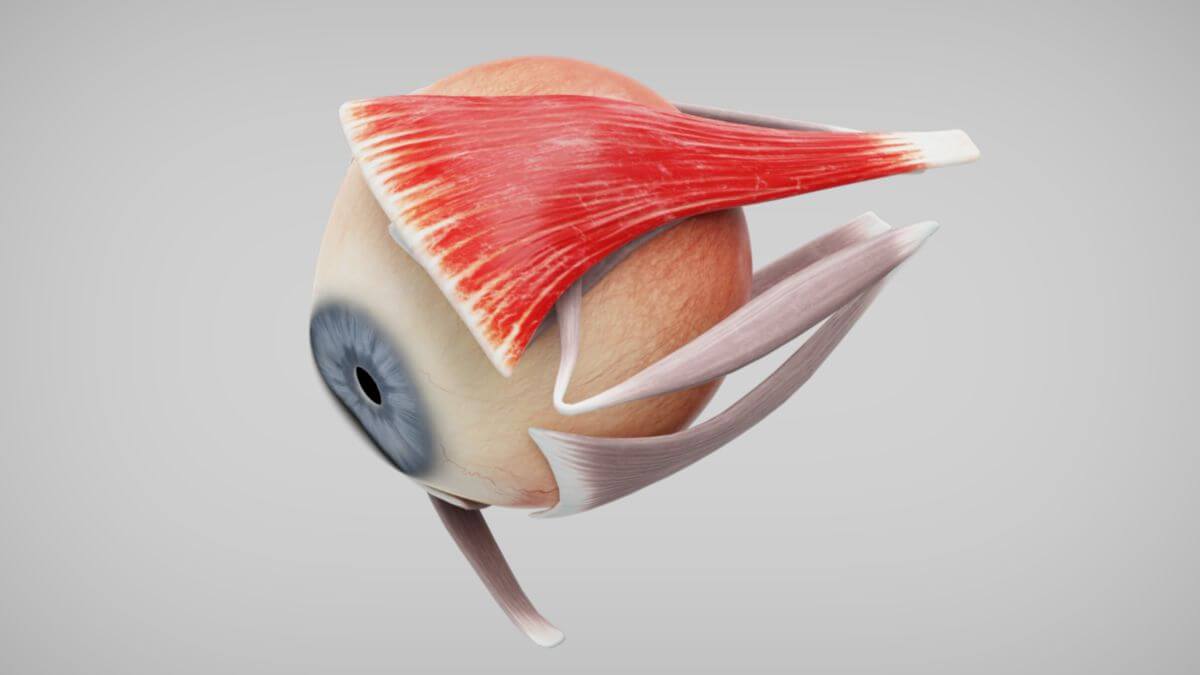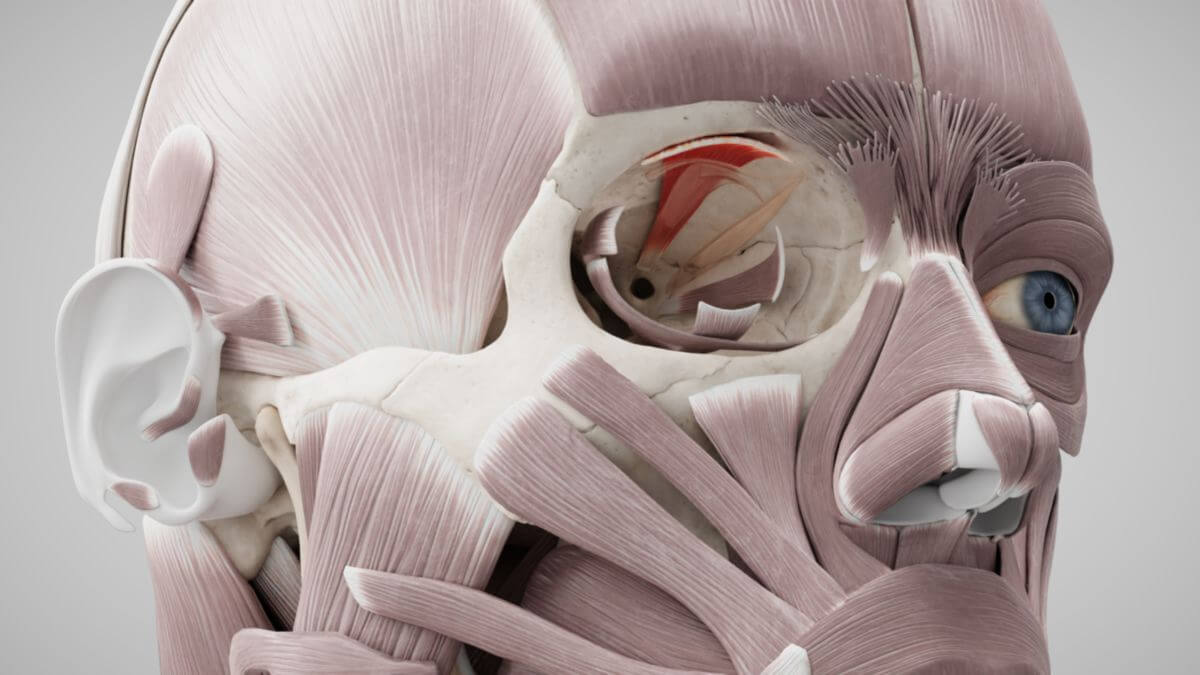Corpus: Superior levator palpebrae muscle
1. Definition
The superior levator palpebrae muscle is a thin, flat, striated muscle belonging to the external eye muscles
.
2. Course
2.1. Origin
The superior levator palpebrae muscle originates near the small wing of the sphenoid bone, above the optic foramen, at the so-called annular tendon. It shares this origin with the other external eye muscles. At its origin, the muscle is narrow and sinewy, but becomes increasingly wider as it progresses.
2.2. Attachment
The muscle ends in an extensive aponeurosis (levator aponeurosis), which is divided into three lamellae. The uppermost lamella radiates into the orbital septum and ends in the upper eyelid between the fibers of the palpebral pars of the orbicularis oculi muscle. The middle lamella ends at the upper edge of the lid plate of the upper eyelid (superior tarsus). The lower lamella attaches to the upper conjunctival fold (superior conjunctival fornix) of the conjunctiva.
3. Function
The superior levator palpebrae muscle lifts the upper eyelid. The muscle performs agonistic movements with the rectus superior muscle. This raises the upper eyelid when looking upwards and lowers it when looking downwards.
4. Innervation
The superior levator palpebrae muscle is innervated by the superior branch of the oculomotor nerve.
5. Topography
The tendon of the superior levator palpebrae muscle divides the lacrimal gland into two parts, the orbital part located above the tendon and the palpebral part located below the tendon.
6. Clinic
A loss of function of the superior levator palpebrae muscle leads to ptosis, i.e. partial or complete drooping of the upper eyelid. As a rule, the movement of the upper eyelid during vertical gaze movements is also restricted.
Another congenital disorder of the superior levator palpebrae muscle is Marcus Gunn syndrome or phenomenon.
In the case of a paretic restriction of gaze elevation, the antagonistic control of the muscle can lead to relative hyperfunction. In this case, the increased impulse to raise the gaze is only incompletely realised by the corresponding eye muscles, but the upper eyelid is raised abnormally.




